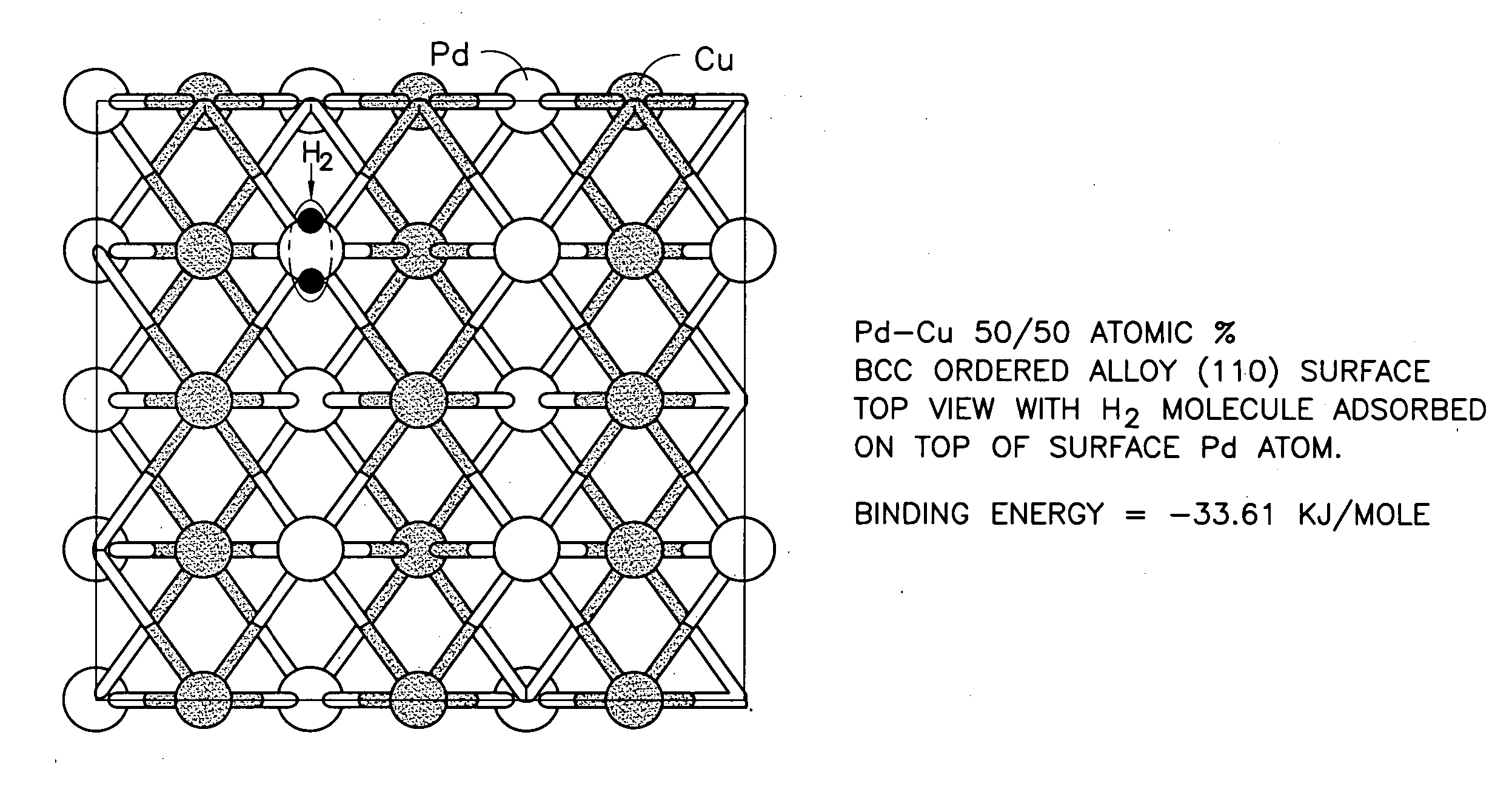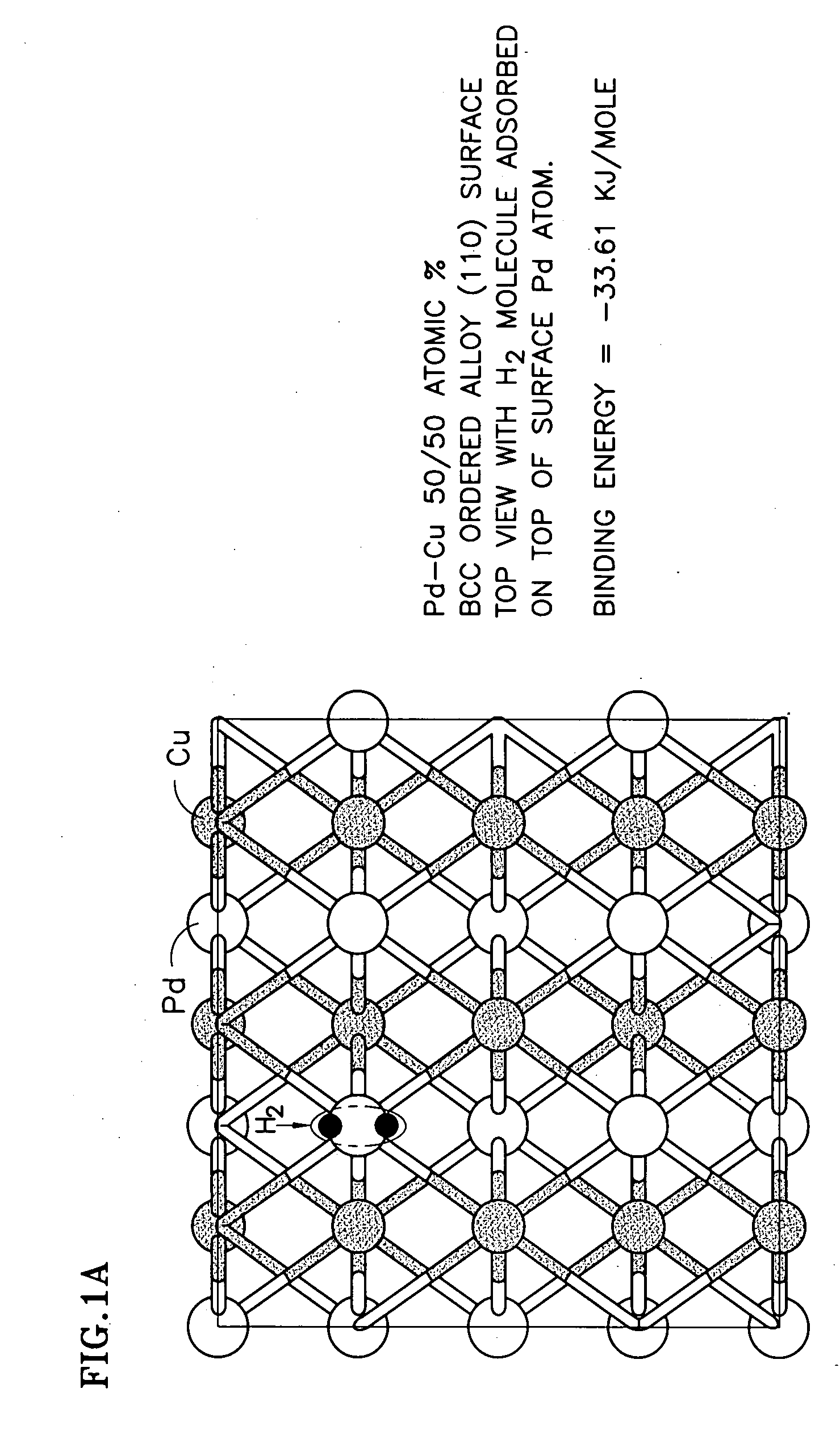Duarable Pd-based alloy and hydrogen generation membrane thereof
a technology of pd-based alloys and hydrogen generation membranes, which is applied in the direction of hydrogen/synthetic gas production, chemical/physical processes, inorganic chemistry, etc., can solve the problems of high cost of hydrogen production from these resources, catalysts are more easily inhibited or poisoned, and catalyst activity decreases with temperature, etc., to achieve high h2 permeance, high permeance, and long life.
- Summary
- Abstract
- Description
- Claims
- Application Information
AI Technical Summary
Benefits of technology
Problems solved by technology
Method used
Image
Examples
Embodiment Construction
[0024] A description of the invention initially includes further reference to the Background Art discussed previously, followed by a detailed description of the invention and one or more preferred modes for carrying out the invention, with reference to the accompanying drawings.
[0025] Alloy development plays an important role in overcoming the problem of Pd embrittlement and in developing S-tolerant Pd-based alloy membranes. As a function of temperature and hydrogen partial pressure, Pd-hydrogen interactions give rise to a β hydride-phase, unstable above 295° C. and an a-phase, stable at high temperatures and characterized by markedly lower hydrogen content. The α-β hydride transition causes serious alteration in the atom spacing of the metal lattice. The consequent dimensional changes can distort the membrane, making it less mechanically resistant, more brittle and prone to rupture. As a result, the resistance to repeated start-up / shut-down cyclic stresses could be low.
[0026] As ...
PUM
| Property | Measurement | Unit |
|---|---|---|
| Temperature | aaaaa | aaaaa |
| Time | aaaaa | aaaaa |
| Fraction | aaaaa | aaaaa |
Abstract
Description
Claims
Application Information
 Login to View More
Login to View More - R&D
- Intellectual Property
- Life Sciences
- Materials
- Tech Scout
- Unparalleled Data Quality
- Higher Quality Content
- 60% Fewer Hallucinations
Browse by: Latest US Patents, China's latest patents, Technical Efficacy Thesaurus, Application Domain, Technology Topic, Popular Technical Reports.
© 2025 PatSnap. All rights reserved.Legal|Privacy policy|Modern Slavery Act Transparency Statement|Sitemap|About US| Contact US: help@patsnap.com



